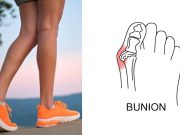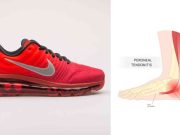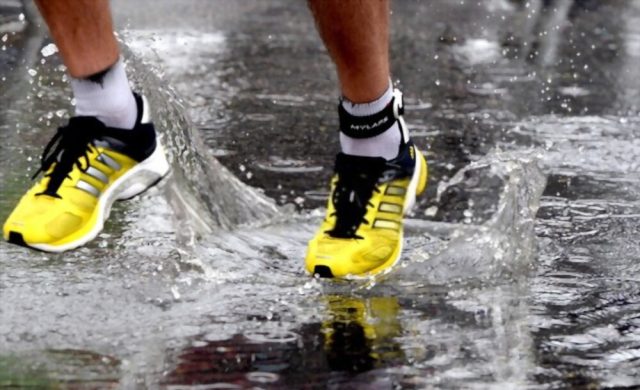Are you a runner looking for the perfect pair of shoes? Then you’ve likely heard about the drop in running shoes. But what are they, and how do they differ from regular running shoes? In this blog post, we’ll break down everything you need to know about What is drop-in running shoes – from the technology that makes them so comfortable to the best brands on the market.
Table of Contents
What is Drop in Running Shoes?
Drop in running shoes, or heel-to-toe drop is the difference in height between the heel and forefoot of a running shoe. It is measured in millimeters and can vary from 0mm (zero drops) to 12mm. A lower heel-to-toe drop encourages a more natural footstrike and stride, while a higher heel-to-toe drop provides more cushioning and can help reduce the impact on the heel.
Drop in running shoes is the difference in height between the heel and forefoot of a running shoe, measured in millimeters. It can range from 0mm (zero drops) to 12mm. A lower heel-to-toe drop encourages a more natural footstrike and stride, while a higher heel-to-toe drop provides more cushioning and can help reduce the impact on the heel.
What is Heel Toe Drop?
Heel to Toe Drop (HTT drop) is a term used to describe the difference in height between the heel and forefoot of an athletic shoe. Measured in millimeters, HTT drop is the difference between how high a shoe is in the heel and the forefoot. It affects the cushioning and overall shape of the shoe, which can impact your running performance.
Low-drop shoes are best for runners who land on their mid- or forefootKnowing what type of shoe is best for you and how to choose one can help you maximize your running performance and minimize your risk of injury.
How is Heel to Toe Drop Measured?
Heel to Toe Drop is measured in millimeters, going from 0 (where the heel and forefoot are the same height) to 14 mm. The drop is the difference between the height or thickness of the midsole under the heel and the same measure under the forefoot.
For example, a shoe with 20 mm of material under the forefoot and 26 mm under the heel would have a 6mm drop. It’s important to note that 10mm remains the most common heel drop for running shoes, but depending on your preferences, you can find options between 0-14 mm. With an understanding of what drop is and how it’s measured, you can make an informed decision about which shoe is best for you.
What are the Different Drop Levels?
The different drop levels of running shoes range from 0 to 12 mm. A 0 mm drop shoe is considered a “zero drop” or “flat” shoe, meaning that the heel and forefoot are at equal height when standing on level ground. Shoes with a 4-8 mm drop are considered “low drop” and are better for runners who prefer to land on the midfoot or forefoot.
Shoes with a 9-12 mm drop are considered “high drop” and are best for runners who land heel first, have issues with their Achilles tendon, or often wear shoes with a higher heel. Knowing your running style and foot type can help you decide which shoe is best.
Why Does Drop Matter?
As we have discussed, the drop is the difference in thickness between the front and back of the shoe. It is important to consider when choosing a running shoe because it can affect your performance and injury risk.
A lower drop shoe may be better for knee and hip injuries, while a higher one may be better for foot, Achilles tendon, and calf issues. A higher drop allows for a rearfoot strike because the elevated heel provides cushioning and support. Ultimately, it’s about finding the amount of drop that matches your running style and needs.
What are the Benefits of Low Drop Shoes?
You may have heard that low-drop shoes can be beneficial for running. This is because the low drop allows for more ankle flexion during landing, which helps absorb the impact and act as a spring. This natural position also means that runners will have more freedom to stretch and roll their feet while running, which can help provide more stability and control.
Additionally, low-drop shoes can encourage runners to rely less on their shoes and more on their strength and balance. This type of shoe can also be beneficial for those who suffer from knee or hip injuries, as it can provide extra support to the ankle. Low-drop shoes can provide a more comfortable and natural running experience, allowing you to build strength and stability over time.
What are the Benefits of High Drop Shoes?
High heel-toe drop shoes (over 7mm) can benefit those who land heel first, have issues with their Achilles tendon, or often wear shoes with a higher heel-toe drop.
These shoes can provide more cushioning and stability to the runner, and they can also help absorb the shock of impact when running, which can help protect the joints from injury. Additionally, high-heel-toe drop shoes can support the runner’s arch and ankle, which can help reduce fatigue and improve performance.
Which Type of Shoe is Best for You?
When choosing the best running shoe type for you, you must consider your individual needs and preferences. The heel-to-toe drop can affect the way you run, and it’s important to determine the drop that works best for you.
If you are a runner who prefers a more natural running gait, a zero-drop shoe may be the best option. On the other hand, if you enjoy more support and cushioning, a higher-drop shoe may be a better fit. Ultimately, the choice is up to you and what works best for your feet and body type.
How to Choose the Right Shoe for You?
Choosing the right running shoe is essential to your safety, comfort, and performance. When selecting a shoe, it’s important to consider the running you plan on doing, the terrain you plan on running on, how often you plan on running, and the heel-to-toe shoe drop.
The heel-to-toe drop is an important factor when selecting a running shoe, as it can help determine which type of runner you are and what type of shoe is right for your foot strike.
Low-drop shoes (0-4mm) are best for those who run forefoot or midfoot, while high-drop shoes (7-14mm) are best for those who land heel first. Additionally, different terrain will require different cushioning or support for your feet.
For example, if you plan on running on roads or trails with rocks or other obstacles, look for a shoe with more cushioning or support to prevent injury. Finally, how often you plan on running should be considered when selecting a shoe, as this will affect the lifespan of the shoe and its performance capabilities.
Common Mistakes to Avoid When Choosing a Running Shoe
Choosing the right running shoe can make all the difference in comfort, performance, and avoiding injuries. Unfortunately, many runners make common mistakes that can lead to discomfort or injury. One mistake is buying shoes for fashion and not function. It’s important to look at the heel drop and the running you’ll be doing.
The lower the heel-to-toe drop, the more natural your foot will feel. If you’re a heel striker, a higher drop can help keep your foot from overstriding and prevent soreness or blisters in your toes.
Wearing a pair of shoes that are too tight can also lead to issues like black toenails and blisters. Lastly, it’s important to remember that there is no one-size-fits-all solution when choosing the right running shoe for you. Different runners have different needs and preferences, so it’s important to find the shoe that works best for you.
Read More: Best running shoes for heavy men
Read More: Best Walking Shoes For Overweight Women
Are low-drop running shoes better?
Low-drop running shoes can offer several benefits, such as increased ankle flexion during landing and a spring-like effect that helps to absorb the impact. They also help promote a midfoot strike with a lower impact stride than a heel strike.
Additionally, they reduce the risk of injury and can be suitable for people with a gait where the forefoot or midfoot strikes the ground first. However, finding the right shoe for your individual needs is important, as different drop levels could benefit different runners. To determine which shoe is best for you, consider your gait, body weight, foot type, running style, and running surface.
What heel drop is right for me?
Choosing the right heel-toe drop for your running style is critical to achieving optimal performance and comfort. Generally, a higher drop shoe (10-12 mm) is recommended if you are a heel striker and have tight calves.
If you have a more natural midfoot strike and have flexible calves, a lower drop shoe (4-6 mm) may be best for you. To ensure you make the right choice, it’s important to consider your running form, foot type, and any conditions that may require a more cushioned shoe. With the right knowledge and understanding of your body mechanics, you can make an informed decision on which type of heel-toe drop will work best for you.
What is foot drop in running shoes?
In running shoes, foot drop is the difference in height between the forefoot and the heel. This difference is measured in millimeters, with traditional running shoes typically having a heel drop of 10mm or more. A lower heel drop offers more cushioning in the heel and encourages a mid-foot strike while running. Low-drop shoes can be beneficial for runners who want to reduce the impact on their joints and muscles, but it is important to find a shoe that fits your needs.
What is a 12mm drop in shoes mean?
A 12mm drop in running shoes is a way of measuring the difference in height between the heel and the forefoot. It is measured in millimeters and is generally considered a moderate heel-striking shoe.
If you wear a 12mm drop shoe, you will notice the heel, although it may still be possible to midfoot strike. When selecting a running shoe, it is important to consider your own individual needs and the drop level of each shoe. Low-drop shoes tend to be more flexible and allow for better natural movement of your foot, whereas high-drop shoes provide more cushioning and support for those who prefer a more traditional heel-striking style. Ultimately, it is up to you to decide which shoe best suits your needs.
Is zero heel drop good?
While there is no definitive answer as to whether zero-heel drop shoes are better for running, there are some potential benefits that you should consider when choosing a running shoe. Zero-drop shoes can provide a more natural running gait, as they have no heel rise that can cause your foot to strike the ground unnaturally. Additionally, zero-drop shoes often have minimal arch support and cushioning, which can help promote stronger feet and ankles. Ultimately, the best type of shoe for you will depend on your individual needs and preferences.
Conclusion
In conclusion, the drop of a running shoe is an important factor to consider when selecting the right shoe for you. Different drop levels can provide different benefits, with low-drop shoes being better for knee and hip injuries and high-drop shoes being better for foot, Achilles tendon, and other injuries. Biomechanical studies have shown that changes in shoe drop between 0 and 8 mm can influence ground-reaction forces and joint angles during running. Ultimately, choosing the shoe that best fits your needs is important to reduce the risk of injury.
































